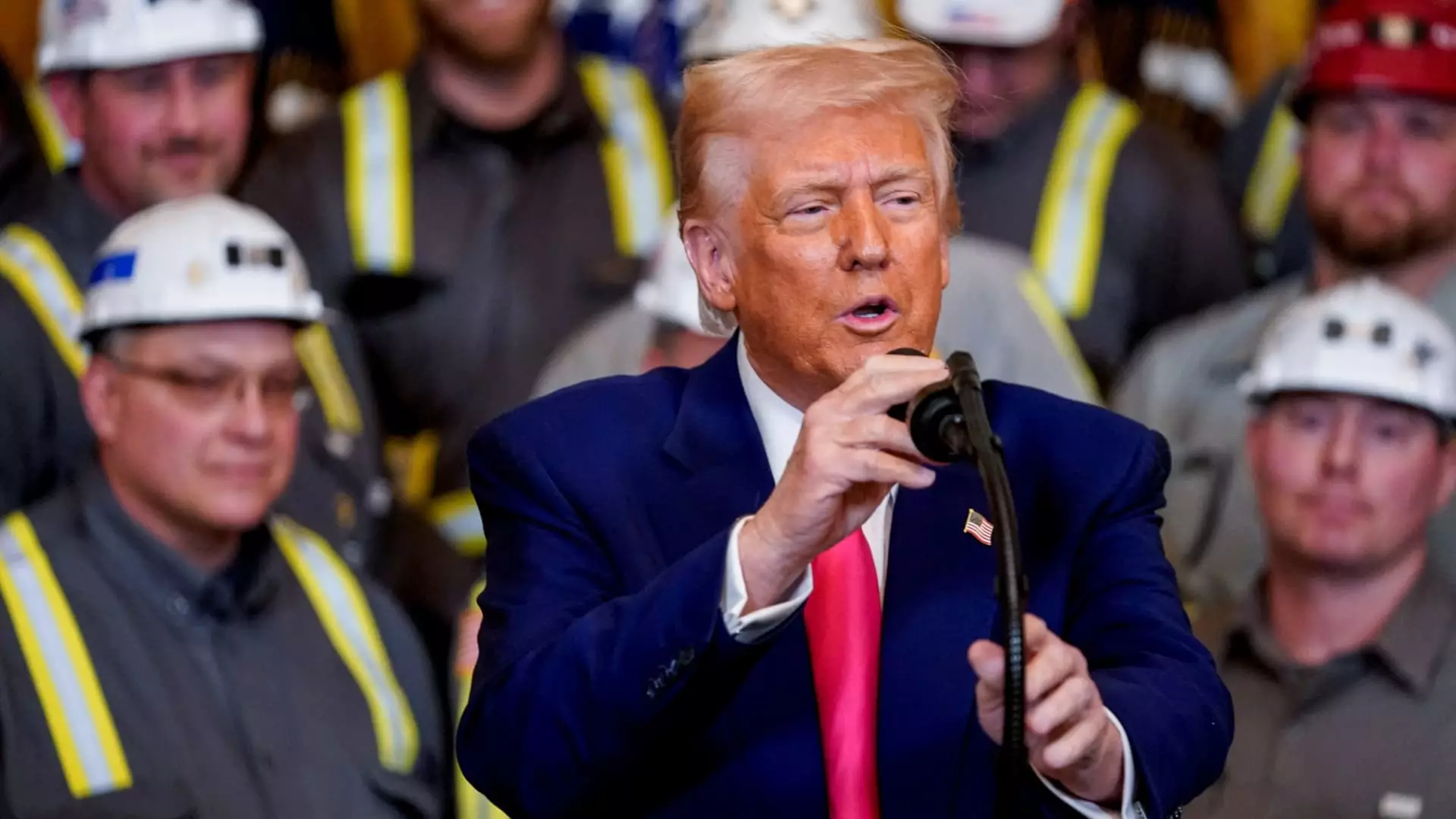The persistent push by former President Donald Trump to revive the struggling coal industry in the United States, particularly in the context of supporting data centers for artificial intelligence (AI), raises significant concerns. The rationale behind this initiative appears to be an ill-conceived strategy that overlooks the technological and environmental advances of recent decades. Instead of acknowledging the ongoing decline of coal’s viability as a source of energy, the executive order from April demonstrates a regressive approach to addressing the already burgeoning energy needs of an evolving tech landscape.
Coal has long been a cornerstone of American industry; however, its time has largely passed. In the year 2023, coal accounted for a mere 16% of U.S. electricity production, a steep decline from the 51% it commanded in 2001. The narrative that coal can somehow rejuvenate manufacturing or technological growth is not only outdated but fundamentally flawed. While President Trump extols the virtues of “clean coal,” it is vital to question the legitimacy of this label when coal-fired plants remain the highest carbon dioxide emitters per kilowatt hour compared to any other energy source, except for oil. By advocating for coal, Trump’s administration is ignoring the urgent plea for a cleaner, greener future endorsed by both experts and the public.
Tech Industry’s Sustainable Future at Odds with Coal Agenda
Trump’s pressing of coal hits a sizeable snag when juxtaposed with the tech sector’s increasing dedication to sustainability. Major corporations like Amazon and Nvidia have invested billions into renewable energy sources such as solar and wind. They are also considering nuclear power as a clean alternative to meet their expansive electricity demands while striving to lower carbon emissions. Such investments stand in stark contrast to the backward thrust dictated by coal-lobbying efforts. Not only does this jeopardize their environmental commitments, but it also sets the tech giants against the very public image they work so hard to maintain.
Even amidst rising energy demands from data centers, coal does not align with the long-term strategies adopted by technology firms. As Kevin Miller from Amazon stated, there exists a need for a multifaceted energy approach. However, the industry’s pivot towards natural gas—which emits less than half the CO2 that coal does—signals that there’s a credible, cleaner alternative available. While there may be temporary measures to ensure grid reliability, there is a clear trend favoring natural gas and renewables over coal.
Reviving a Relic: The Illusion of Coal’s Comeback
Peabody Energy CEO James Grech presents optimistic projections about coal, claiming that it can meet the nation’s growing energy demands amid booming data center economies. His statements appear increasingly antiquated, underlined by a considerable reliance on nostalgic appeals rather than anything grounded in future possibilities. The suggestion to “un-retire” coal plants that have been mothballed raises alarming ethical and practical questions: why revive an outdated industry that has clearly faced economic defeat and environmental backlash? Coal has effectively “found itself without a job,” as Nat Sahlstrom aptly put it.
One cannot help but perceive Trump’s appeals to coal mining constituents as a tactical maneuver to garner political support rather than a genuine effort to innovate the energy sector. Despite pressure from the administration, it seems highly improbable that tech companies will be eager to forge long-term commitments with coal plants—especially when they are actively pursuing carbon-neutral goals. It appears that these tech giants are keenly aware that aligning their futures with coal would be akin to sailing against the tide of history, potentially exposing themselves to reputational risks.
A Deleterious Dependence on Coal
The potential resurgence of coal reliance, largely touted by Trump, could have negative ramifications on broader environmental goals. Moody’s report points out that utilities are already postponing the retirement of coal plants, which is counterproductive to decarbonization efforts aimed at combating climate change. Data centers may temporarily prolong coal demand, but in a society that desperately needs to pivot toward sustainability, how can we allow the past to dictate our current and future energy framework?
With projections indicating a possible 40% surge in electricity demand by 2039, the response should not revolve around reviving old coal plants. Instead, energy policy should prioritize investment in renewables and advanced technologies that ensure sustainable growth alongside environmental stewardship. Will we allow sentimentality to govern our energy strategies, or will we grasp the opportunity to innovate and adapt to a changing world? By clenching tightly to coal, we risk stalling our progress and damaging our planet.
In the end, the attempt to resurrect coal in the name of progress looks increasingly out of place. If we truly wish to foster a future that aligns with climate goals and technological advances, it is imperative to move past outdated industries and embrace the innovative possibilities that lie ahead.

